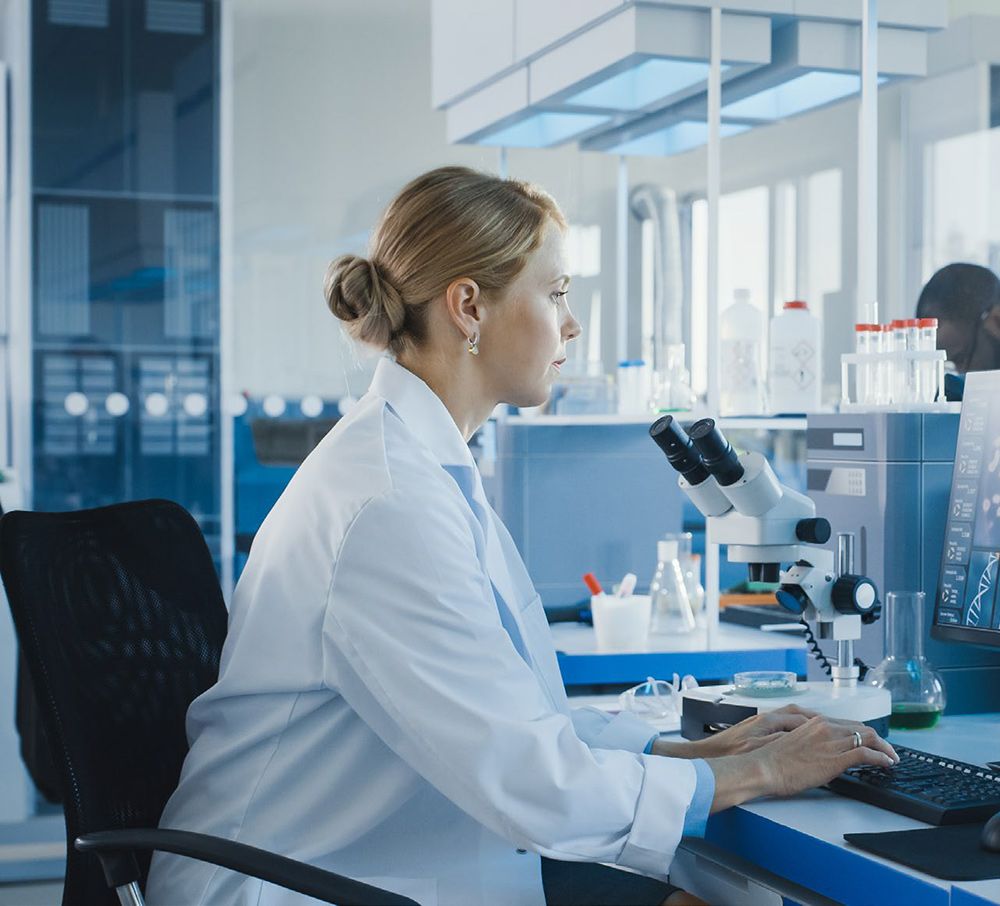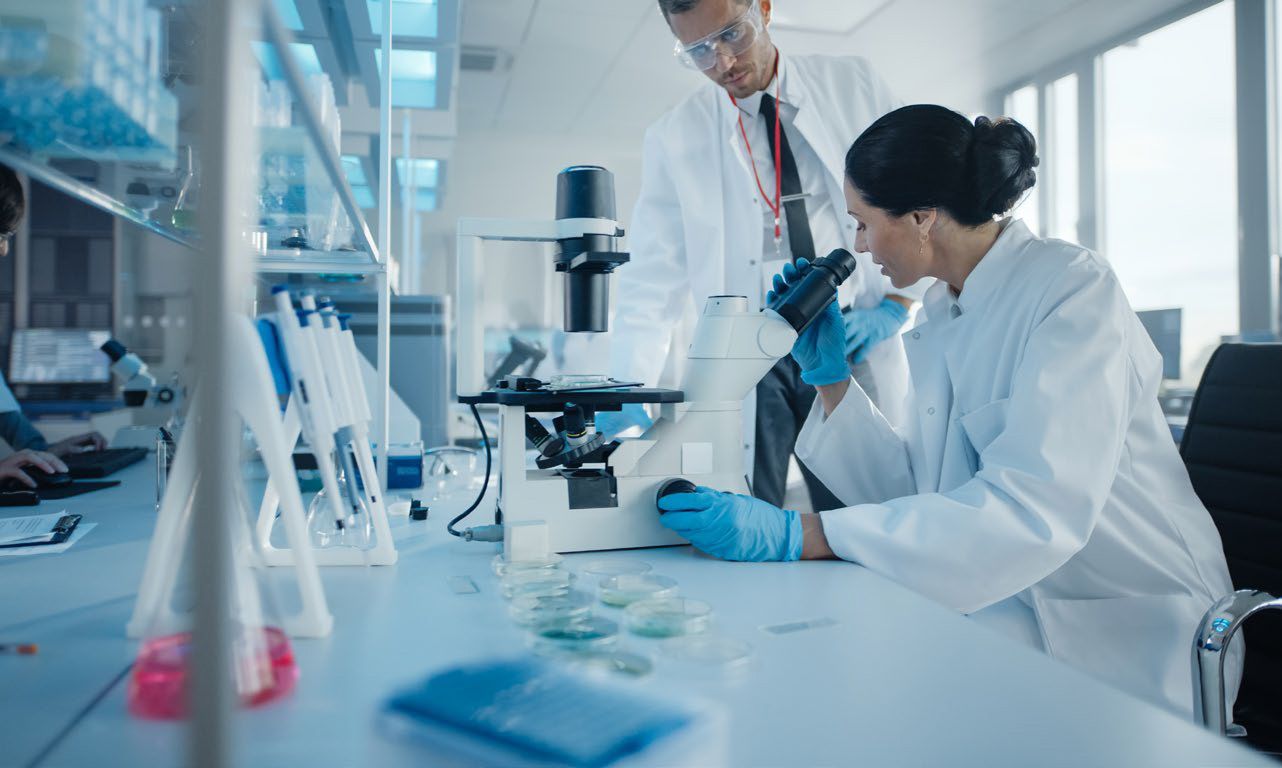The outsized success of Ireland’s Life Sciences (LS) sector is well known and rightly celebrated. But as the IDA and many an Irish county manager at a multinational will attest, it did not happen by accident, and its continuation is not inevitable. As global competition for Foreign Direct Investment (FDI) in the LS ecosystem continues to strengthen, local subsidiaries will need to relentlessly innovate in their approach to policy & external stakeholder engagement, regulatory compliance, manufacturing, R&D and commercial operations. Our Strategy team explore the issues and their implications below.
As the world’s largest healthcare companies formulate commercial and operational strategies for the coming decade, their Irish operations need to be able to clearly articulate their value-add if they are to continue to enjoy the support of the parent organisation.
With many of the sectoral advantages Ireland has relied on to this point being eroded by industry trends, it is important for all stakeholders to be very clear on what will replace them, and exactly how Irish operations can remain not only a favoured destination for continued greenfield and expansion investment from LS giants, but also a location where those established organisations wish to stay.
Irish operations need to be able to clearly articulate their value-add if they are to continue to enjoy the support of the parent organisation
Life Sciences in Ireland: a story of success
Ireland’s Life Sciences sector is one of its proudest commercial successes. The numbers tell a compelling story, with Ireland manufacturing, for instance, more than 40% of the world’s contact lenses, 80% of its stents, and 75% of its orthopaedic knee products. Five of the world’s eight top-selling medicines are also produced in Ireland, making it the world’s largest net exporter of pharmaceuticals.
The consolidated LS sector - spanning medical devices, diagnostics, pharmaceuticals and bio-pharmaceuticals - exports more than €45 billion annually and employs over 50,000 people directly.
Eighteen of the world’s top 20 pharmaceutical companies and 15 of the world’s top 25 MedTech companies are located in Ireland, alongside hundreds of home grown businesses in a developed ecosystem comprising large multinationals, start-ups, and high-growth SMEs covering all segments of the sector from product manufacturing and R&D to clinical trial management. Employment in the sector is distributed across clusters in Dublin and its surrounding regions as well as Cork, Waterford, and Limerick.
The next decade: a sector in flux
LS is a sector steeped in innovation and technology and dependent on a highly complex regulatory environment, all of which are evolving at a breakneck pace. We expect the sector to be dramatically transformed in the coming decade by a suite of powerful trends including the widespread adoption of cell & gene therapy-based products, accelerated digitisation across discovery, manufacturing, distribution, quality and treatment as well as increased collaboration amongst players, all supported by prominent environmental, social and governance (ESG) strategies.
The impact of the COVID-19 pandemic has already prompted a dramatic shift. Whilst traditional LS products have been subject to disruption both up and downstream, sales of vaccines, anti-viral medicine, diagnostics and associated medical devices such as ventilators and personal protective equipment have hit (albeit temporary) unprecedented heights.
Some treatments are likely to reach blockbuster levels, creating new areas of therapeutic and commercial focus for pharma, biotech and MedTech companies. Independent of the pandemic, the sector is witnessing the coming of age of highly effective cell & gene therapy products, a product class which is likely to see explosive growth in the next decade, with a comparable growth in investment from global parent organisations.
Development and manufacturing in this space will be impacted by 4th Industrial Revolution technology such as wearables, AI, AR, VR, blockchain, cloud and edge computing. Like other sectors, LS will also see technology-driven convergence between formerly disparate players, resulting in stronger competition and consolidation within a fragmented sector, necessitating ever-greater interplay between industry, policy, research and clinical leaders.
This flux presents clear opportunities for innovative companies to capture future global investment flows from parent organisations to further expand their local operations. In addition, a number of blockbuster products have come off patent in recent years, with more to come before 2025, threatening revenues at the same time as R&D costs rise due to a combination of regulatory and technological escalation, all of which has a potentially major impact on the re-organisation of manufacturing supply chains globally.
Finally, it is yet to become clear how American trade policies, the potential repatriation of European funds and the emerging trend of deglobalisation will impact future investments in Europe.
Eighteen of the world’s top 20 pharmaceutical companies and 15 of the world’s top 25 MedTech companies are located in Ireland
Breathing down our neck: the global competition for LS
As it signs up to the OECD’s minimum effective corporate tax rate, how well-prepared is Ireland to maintain its current market edge as a LS destination in the coming decade? There is no shortage of challengers looking to position themselves as LS hubs. Within Europe, Belgium, France, Germany, the Netherlands and Switzerland are all major recipients of LS foreign direct investment and all come with attractive market propositions for multinationals and start-ups alike.
Comparing Ireland’s relative attractiveness to each of these competitors for individual investment decisions is a complex exercise. Broadly, Ireland’s tax environment, R&D incentives, talent availability and labour regulations are strengths, but its labour costs and innovation performance compared with some European players are potential drag factors.

Competitiveness
A recent KPMG analysis of site selection criteria in LS (PDF, 3MB) globally shows Ireland has relatively few products in development relative to competitors, and hosts a smaller share of global and regional HQs than we might assume. It also lags competitors on medicines and trials approval times, as well as start-up funding.
An example of how Ireland (#13 for competitiveness globally) ranks across key metrics against Switzerland (#1) and Belgium (#24) is outlined below;
| Ireland | Belgium | Switzerland | |
|---|---|---|---|
| Avg hourly labour costs € (Eurostat) | 32 | 37 | 60 |
| Biopharma patents granted 2018 per million (European patents office) |
7.8 | 5.5 | 18.3 |
| Corporate tax rate | 12.5%* | 25% | 15% |
| Number of companies in the LS sector | 308 | 410 | 1,038 |
| Competitiveness ranking (IMD world competitiveness) |
13 | 24 | 1 |
| FDA approved manufacturing plants | 20 | 36 | 66 |
| R&D expenditure as % of GDP | 1.2 | 2.9 | 3.2 |
| Talent competitiveness index 2020 (INSEAD) | 15 | 18 | 1 |
| Employment protection (OECD) ** | 1.98 | 2.72 | 1.57 |
*Ireland has signed up to the OECD minimum global taxation rate of 15% for certain businesses, which has not yet been implemented.
**Higher scores represent stricter regulation and employment protection
Outside of Europe, India has huge ambitions to become a global LS hub for both R&D and manufacturing, and recent years have seen increasing numbers of LS knowledge-based roles shifting eastwards, with Hyderabad amongst the world’s most cost competitive locations for LS R&D.
The Irish difference
Ireland’s competitive advantage in LS to date has been built on a handful of well-understood factors:
- Excellence in manufacturing and regulatory compliance
- Highly qualified workforce
- Low corporate tax rates
- Competitive R&D tax credits and IP supports
- World-class research landscape
- Strong and transparent regulatory framework
However, in the increasingly competitive global environment, past success will not guarantee future investment. Irish subsidiaries will need to be clear on what they have to offer to encourage continued investment from global parent companies. From our analysis, we think there are at least seven strong themes for Irish companies to focus on when developing a strategy to articulate their value-add to parent organisations:

01. Patient outcomes
At the core of global LS companies is the desire to improve the lives of patients through the development and delivery of highly effective medicines and medical devices. Local Irish based affiliates contribute enormously to global patient outcomes via the manufacture of innovative treatments. This footprint should be highlighted to demonstrate the global impact of the local subsidiary within the larger parent organisations’ therapeutic strategy.
02. Education
Ireland is a favoured global location for tech giants as well as LS, with seven of the world’s top ten tech companies having operations here. Ireland boasts a vibrant tech sector spanning analytics, hardware, software, and cloud, which makes it a perfect environment for collaboration and cross pollination between tech and other sectors. This is a major selling point in LS, where the growing dependence on patient data and its associated integrity/security, digital therapeutics, co-packaged or integral digital devices to accompany medicines and diagnostics is a clear trend.
03. Economic value of currently manufactured products
Capital investment and operational expenditure by Irish based affiliates creates a knock-on impact on the wider Irish economy, supporting economic growth and job creation. Understanding this impact can help affiliates to quantify their enabling effects on productivity, efficiency, employment, government revenue, investment, and innovation. To this end, affiliates can include economic impact studies as part of their local corporate strategies or annual reports, to understand and demonstrate their economic impact to stakeholders and policy makers.
04. Infrastructure
Ireland is ideally positioned to capitalise on growth areas such as Cell & Gene Therapies (CGT) and Pharma 4.0, due to its advanced manufacturing base with proven strength in implementation of next gen manufacturing technologies and its supportive ecosystem. Ireland boasts more Shingo prizes globally per capita than any other country, and businesses enjoy the support of a highly developed CMO/CRO support sector.
05. R&D
Capital investment and operational expenditure by Irish based affiliates creates a knock-on impact on the wider Irish economy, supporting economic growth and job creation. Understanding this impact can help affiliates to quantify their enabling effects on productivity, efficiency, employment, government revenue, investment, and innovation. To this end, affiliates can include economic impact studies as part of their local corporate strategies or annual reports, to understand and demonstrate their economic impact to stakeholders and policy makers.
06. Regulatory environment
As noted above, Ireland has an exemplary compliance record with regulatory agencies, spearheaded locally by the Irish Health Products Regulatory Authority (HPRA). The region’s successful track record of contributing to regulatory approvals is a powerful message to assure parent organisations that Ireland is an optimal location for further investment.
07. Inter-sectoral potential
Ireland has one of the most educated workforces in the world. The share of 30-34 year olds in Ireland with a third level qualification is 56.3%, compared to an EU average of 40.7%. Nearly a third of students take STEM courses. Ireland is well positioned to be a technical leader in the coming cell and gene therapy growth phase.
Conclusion: the relentless pursuit of excellence
The erosion of Ireland’s tax advantage by global agreements, industry consolidation, and mounting challenges from emerging markets, will all place relentless pressure on Ireland’s competitiveness as a LS destination in the coming decade.
For Ireland to remain a leader, all industry stakeholders will need to take decisive steps to capitalise on the trends that will shape the future of the industry, and with a substantial portion of the EU’s €750bn post-pandemic stimulus package earmarked for LS and healthcare, there has never been a better time.
We believe that local LS subsidiaries should look to aggressively position their Irish operations as an innovative and future growth centre within their global parent organisation. Irish subsidiaries can become key leaders in digital health, advanced manufacturing, CGTs and other cutting edge treatments, as opposed to a simply a “manufacturing hub”, all while highlighting the regions ability to meet ESG goals.

This will require, among other things, investing in skills development, training, R&D capability, and next generation manufacturing capability, all of which needs to be clearly articulated and demonstrated to be aligned with the parent organisation’s wider strategy.
Irish subsidiaries looking to ensure continued investment for products, manufacturing sites/technologies, service centres, or human resources will need to be acutely aware of all sources of current and future competitive advantage, in order to stretch their value-add messaging with parent companies and articulate the actual value of local operations in Ireland in a communicable and compelling format.
Stakeholder considerations
In summary, when vying for additional parent investment within a multinational, stakeholders should consider for example:
- Financial, commercial, economic and operational benchmarking, both within the group and against external datasets. Data analytics on the cost competitiveness of a site across operations and supply chain should be standard, with value optimisation undertaken prior to pitching for further investment. Relevant metrics could include distribution centre footprints analysis, direct/indirect procurement costs and efficiency and full site profitability analysis. These metrics enable a fact-based dialogue with parent organisations on the allocation of funding and additional investment. Our proprietary benchmarking tool, built on aggregated and anonymised client data, for example, covers over 8000 LS companies globally, 610 of which have annual turnover in excess of €500m to quickly benchmark against peers.
- The comparison of headline figures such as Irish labour costs versus competitor regions in the global network often lacks adequate granularity to highlight the true competitiveness of each individual location. Underlying metrics for the region such as product defect rates and employee absenteeism should be captured. The end impact of these metrics on overall site return on investment should be measured, quantified and articulated.
- Geographical nuances should be highlighted and leveraged to increase the attractiveness of a region, such as the largely untapped regional differences in labour costs and the cost of living particularly in the border countries and Northern Ireland.
Growing the ecosystem
Outside of local life science affiliates, inward investment stakeholders, regulators and policy makers all have a part to play to encourage growth of the ecosystem, by considering for example:
- Additional fiscal levers which could be deployed to offset any changing sentiment due to the OECD minimum global taxation rates. Analysis of Ireland’s current offerings such as the R&D tax credit and the Knowledge Development Box should be benchmarked for attractiveness versus global locations for FDI flows which offer angel tax credits, investment tax allowances and special incentives such as “Pioneer status” offering above average tax exemptions.
- Ireland’s regulator is a leader on the European stage, but enhanced engagement with life science companies could be facilitated via enhanced formal and in-formal regulatory advice to assist navigation of the increasingly complex regulatory ecosystem. Specific advanced supports to life science companies seeking to establish in the EU for the first time could be created.
- Policy makers should take note of Ireland’s lagging availability of advanced therapies in the form of cell and gene therapies. These treatments will drive the next decades of innovation across life sciences and Ireland is at risk of loosing out. A clear policy outlining how these treatments will be made available and reimbursed should be created.
About KPMG’s Global Strategy Group
KPMG’s Strategy Group works with private, public and not-for-profit organisations to develop and implement strategy from ‘Innovation to Results’ helping clients achieve their goals and objectives.
KPMG Global Strategy professionals develop insights and ideas to address organisational challenges such as growth, operating strategy, cost, deals, digital strategy and transformation. In Ireland, we are the largest deal and corporate strategy house, working across sectors including healthcare and life sciences, financial services, aviation, manufacturing, food & agri and technology, media and telcom sectors.
Contact our Strategy team
Christopher Brown
Partner, Head of Strategy
KPMG in Ireland
Daragh McGreal
Director – Head of Strategic Economics
KPMG in Ireland
David Walsh
Director – Strategy Healthcare and Life Sciences lead
KPMG in Ireland


